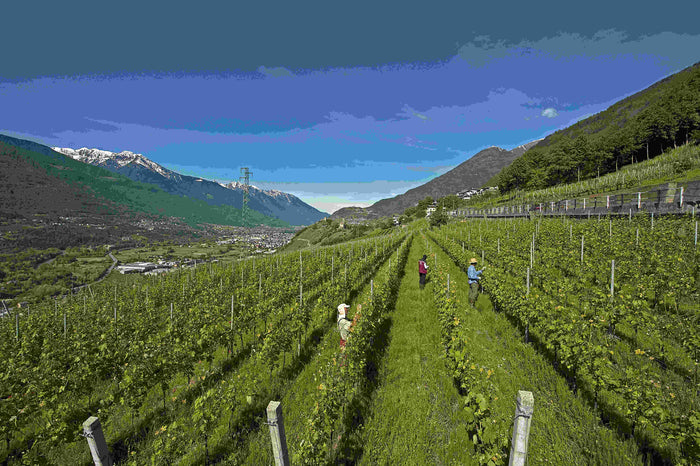Description
In it’s simplicity it is an explosion of Alpine freshness. It’s typical product indication (IGT Alpi Retiche) means that the Nebbiolo grapes come from the terraced vineyards in the province of Sondrio.
Details

Perfume

Color

Taste
Serve at:
14 -16 °C.
Longevity:
05 - 10 years
Decanting time:
1 hour

Pairings
- Start up year: 1928
- Oenologist: Mamete Prevostini
- Bottles produced: 180.000
- Hectares: 30
It is a territory whose streets over the centuries have been traversed by peoples and civilizations which over the decades have left a contribution very recognizable today through the traditions, the culture, the typical products.
Around the most important of these, the wine, has created a large community that still carries the same production processes then using what is universally recognized as one of the largest vineyards in the world, Nebbiolo (here called chiavennasca). the history of the winery began over seventy years ago when Mamete Prevostini begins, was the first post-war period, to produce wine from local grapes within the Crotto family, typical of Valchiavenna natural cavity formed in prehistoric times.
In 1988, however Mamete nephew, the current owner, took over the company's reins, and after a series of tests lasted about eight years signed his first real production in 1995, becoming within a decade a wine draft exceptional value. Today, all the wines are aged in a different way, according to unwritten rules but that are renewed year after year. Elegance, refinement, power for a great interpretation of Nebbiolo in Valtellina. Read more


| Name | Mamete Prevostini Alpi Retiche Botonero 2023 |
|---|---|
| Type | Red still |
| Denomination | Alpi Retiche IGT |
| Vintage | 2023 |
| Size | 0,75 l |
| Alcohol content | 13.5% by volume |
| Grape varieties | 100% Nebbiolo |
| Country | Italy |
| Region | Lombardy |
| Vendor | Mamete Prevostini |
| Origin | The I.G.T. denomination area of Alpi Retiche in the province of Sondrio |
| Climate | Altitude: 300 - 700 m. a.s.l. Exposure: South. |
| Soil composition | Sand (70%), silt (30%), limestone, high content of granite rock, rarely clayey. |
| Cultivation system | Guyot |
| Plants per hectare | 3600 |
| Yield per hectare | 66 hl |
| Harvest | From September 26. |
| Wine making | Berries not perfectly intact are eliminated. After a gentle destemming, the grapes, lightly pressed, are sent in stainless steel containers where the alcoholic fermentation takes place in 6 days, during which the must on the skins is incorporated by maceration. |
| Aging | After the pressing, the wine, always placed in stain-less steel containers, carries out the malolactic fermentation. Here it remains for further 8 months of aging. The process is completed with a refinement in bottle. |
| Total acidity | 5.8 gr/L |
| Allergens | Contains sulphites |




